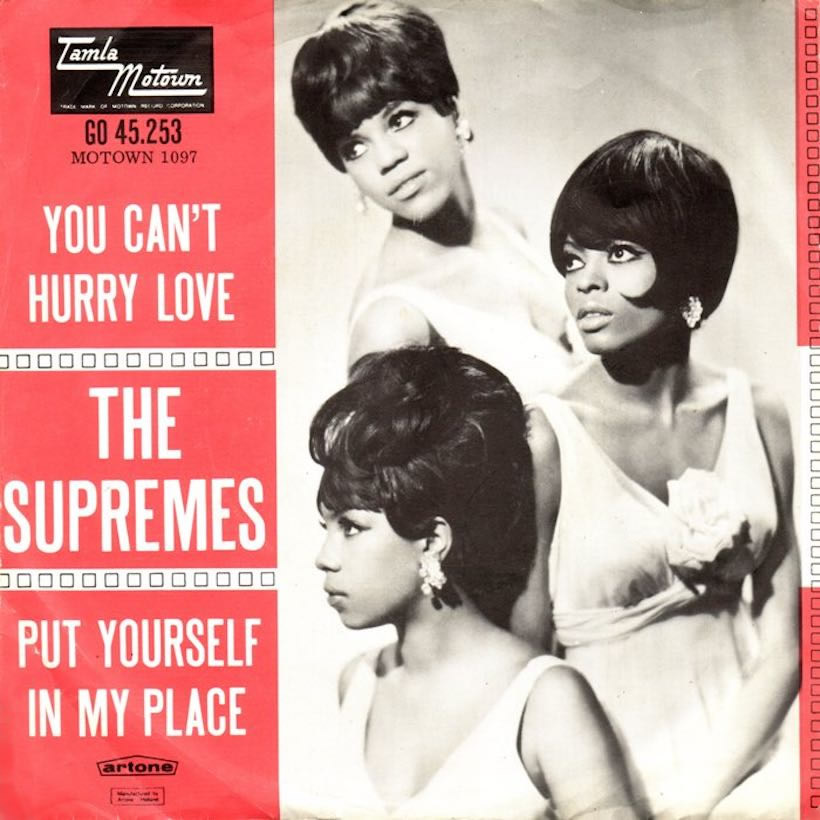The peerless Supremes racked up a remarkable tally of 12 No.1 American pop singles in just five years and four months, between 1964 and 1969. On September 10, 1966, they moved into the second half of that run, which saw the trio hurry towards chart immortality with “You Can’t Hurry Love.”
The trio’s first six pop chart-toppers had, incredibly, all arrived within the space of 15 months, from “Stop! In The Name Of Love” in August 1964 to “I Hear A Symphony” in November 1965. When the group returned to singles action the next year, “My World Is Empty Without You” reached “only” No.5 and “Love Is Like An Itching In My Heart” No.9. But as their next release, “You Can’t Hurry Love” was in a hurry, taking just five weeks to race 66-28-7-4-1.
No.2 won’t do
By this time, Berry Gordy’s expectations for Motown were almost ruthlessly high. As recalled in Volume 6 of the Complete Motown Singles series, in early July, 1966 he sent a memo to his staff that read: “We will release nothing less than Top 10 product on any artist. And because the Supremes’ worldwide acceptance is greater than the other artists, on them we will release only No.1 records.”
Listen to the Best Motown Songs Ever playlist.
The Holland-Dozier-Holland composition had the working title “This Is Where I Came In,” before they landed on the lyric they wanted. Taken from the album The Supremes A’ Go-Go, it was a hands-down commercial winner from the get-go. The single started its two-week run atop the Hot 100 this week in 1966 and spent a fortnight as the R&B chart No.1 as well.
It goes without saying that the most famous remake of “You Can’t Hurry Love” is Phil Collins’ No.1 interpretation from 1982, but like so many other Motown copyrights, it was also covered from within, so to speak. The Jackson 5 recorded the tune, which among many other remakes, was also done by Bette Midler on her It’s The Girls album in 2014.
Buy or stream “You Can’t Hurry Love” on The Supremes A’ Go-Go.




